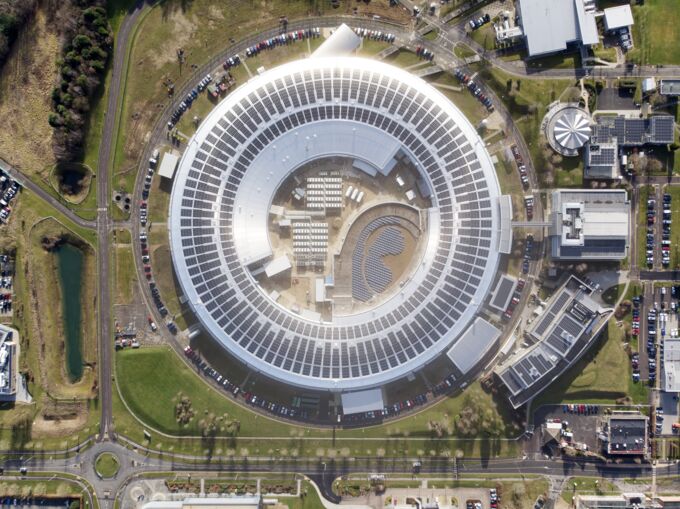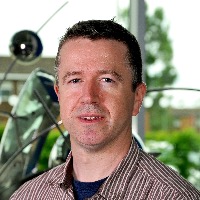

Harwell Campus is home to Diamond Light Source and Research Complex at Harwell.
Diamond Light Source offers access to a range of technologies and services, including fragment screening, cryo-electron microscopy, serial crystallography, soft x-ray tomography, and long wavelength experiments. Through the Research Complex at Harwell, services for molecular biophysics, membrane protein production, and crystallisation are available.
Harwell Science & Innovation Campus
OX11 0DE, Didcot
United Kingdom
By road
The Campus is located directly off the A34, accessed from Junction 13 of the M4 motorway in less than 10 minutes (9 miles). Junctions 8 and 9 of the M40 are both within 30 minutes of the Campus.
Parking
Harwell Campus has limited parking available, but spaces are available in the RAL site visitors carpark.
By train
The nearest rail station is Didcot Parkway, served by trains from London Paddington.
By taxi
The Harwell Campus is about a 15-20 minute drive from Didcot Parkway railway station, and about 35-40 minutes from Oxford railway station.
By bus
A regular bus service runs to the campus.
ST1 timetable – the ST1 runs every half hour from 7am to 7pm between Harwell Campus and city of Oxford.
Thames Travel bus timetable – a dedicated bus shuttle service, with four buses per hour in each direction from 7am to 7pm Monday to Friday, serves the Didcot Parkway Rail Station to Harwell Campus route (bus numbers 43 and 94).
Travelling from airports
Harwell is about one hour’s drive from Heathrow Airport and two hours from Gatwick Airport.
Accommodation
There are a number of hotels nearby and also accommodation can sometimes be arranged on the campus at Ridgeway House or in Abingdon at The Cosener’s House.
Restaurant
Restaurant facilities are provided both on the RAL site and as part of the meeting and conference facilities at The Cosener’s House.
Further information about the Harwell Campus is available at: www.harwellcampus.com
Crystallographic Fragment Screening at Diamond’s XChem facility and beamline I04-1.
Supporting 1000+ fragment screens and structurally enabled fragment hit-to-lead development.
View All X-Ray Techniques at Instruct
View All Fragment/ligand Screening at Instruct
The Electron Bio-Imaging Centre (eBIC) provides scientists with state-of-the-art experimental equipment and expertise in the field of cryo-electron microscopy, for both single particle analysis and cryo-tomography. Currently eBIC houses five Titan Krios microscopes, a Talos Arctica, Glacios, and a Scios and Aquilos cryo-FIB/SEM.
The Membrane Protein Laboratory (MPL) at the Research Complex Harwell is a research and training user facility open to scientists from laboratories anywhere in the world that are interested in the Structural Biology of Membrane Proteins. The laboratory combines recently developed high throughput technologies for membrane protein production and crystallisation with the latest developments in X-ray diffraction data collection systems at Diamond MX beamlines. Our team of in house support scientists are on hand to help visitors with all aspects of their experimental design and setup.
The Membrane Protein Laboratory (MPL) at the Research Complex Harwell is a research and training user facility open to scientists from laboratories anywhere in the world that are interested in the Structural Biology of Membrane Proteins. The laboratory combines recently developed high throughput technologies for membrane protein production with sample preparation for crystallisation and cryo-electron microscopy. As a Wellcome funded support facility within Diamond Light Source we are uniquely placed to utilise the latest state-of-the-art developments in X-ray diffraction data collection and cryo-electron microscopy.
The Research Complex at Harwell hosts the Biophysical Instruments Facility which houses a range of equipment for the analysis of the biophysical properties of molecules and their interactions. Techniques available include analytical ultracentrifugation (AUC), surface plasmon resonance (SPR), isothermal titration calorimetry (ITC), dynamic and multi angle light scattering, flow induced dispersion analysis (FIDA), nano-differential scanning fluorimetry (nanoDSF) and stopped-flow spectroscopy. The instruments are available to both internal and external users, and to both academic and commercial organisations. The level of support from the facility is tailored to the requirements of each individual user, and ranges from instrument training through to full service work.
Diamond provides a range of techniques for academic and industrial researchers studying the machines of life. As one of those techniques, Macromolecular Crystallography (MX) reveals the shape and arrangement of biological molecules at atomic resolution, knowledge of which provides a highly accurate insight into function. This can be combined with complementary information from many other techniques available at Diamond alongside lab based investigations to reveal the broader picture of molecular interactions and their effects.
Small Angle X-ray Scattering (SAXS) covers the major disciplines of Biology, Chemistry and Physics delivering structural and dynamic information in nanoscience, mesoscopic architectures, supramolecular structures and nucleation/growth of crystals. SAXS is also proving important in archaeological, environmental and conservation sciences, indicating an ability to span a wide range of scientific disciplines.



